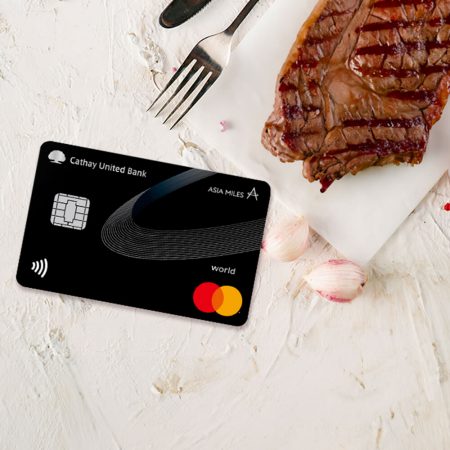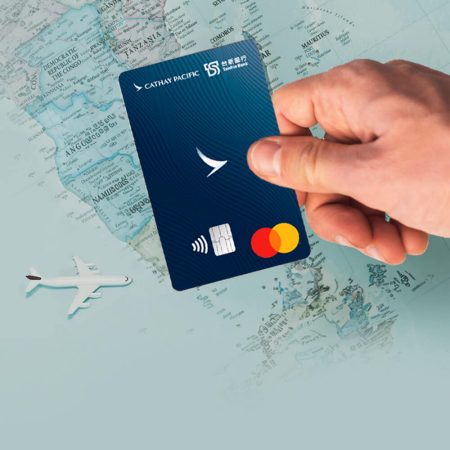Usage of power banks is now restricted on Cathay Pacific flights – here’s what you need to know

We’ve introduced new safety standards across Cathay Pacific flights to better protect our customers, following recent regulations set out by the Hong Kong Civil Aviation Department. While power banks are a handy way to keep your personal electronic devices charged while travelling, tightened restrictions are in place to mitigate the risks posed by lithium batteries which commonly power them.
“At Cathay Pacific, our focus is always on the safety of our customers and our people,” says Peter Clemmow, Cathay Pacific’s General Manager, Group Safety and Operational Risk Management.
Read on to find out more about the new flight safety regulations and how they affect your next journey.
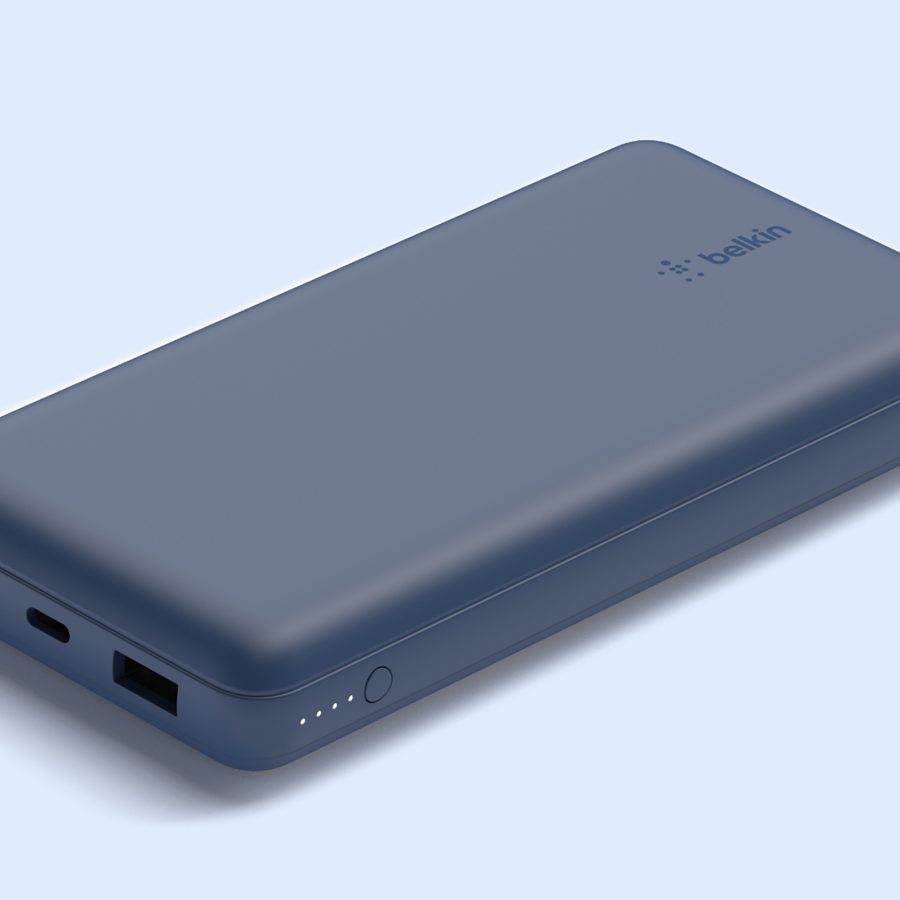
What is a power bank?
A power bank is a portable power source used to charge electronic devices such as mobile phones, tablets and cameras. It typically contains a lithium-ion battery, which stores electrical energy that charges your device when connected by a USB cable, or via wireless or magnetic charging capabilities. To charge a power bank, you will need to connect it to a power source via a USB cable and an adapter.
Power banks come in different capacities – commonly measured in Watt-hours (Wh). Smaller ones are suitable for charging a single smartphone, while larger ones can charge multiple devices at once.

Credit: vadishzainer/Getty Images
The new rules
Like any power source, lithium battery power banks can overheat and potentially catch fire, a rare occurrence called “thermal runaway”. For this reason, they can endanger you and your fellow passengers. Pre-existing safety regulations meant to mitigate this risk of lithium batteries on planes include limits on power bank capacity and a ban on placing power banks in checked baggage. However, after recent discussions with the airline industry, Hong Kong’s Civil Aviation Department has further tightened restrictions on their use and storage on Hong Kong registered airlines – on flights to and from the city.
Clemmow says, “We welcome the proactive restrictions announced by the Hong Kong Civil Aviation Department, and we look to lead by example as we implement these important safety enhancements while supporting our customers.”
As of 7 April 2025, customers are:
not allowed to charge electronic devices, such as mobile phones and tablets, using power banks at any point during the flight
not allowed to charge power banks using in-seat power sources at any point during the flight
The only exception is if a battery needs to be used during the flight for essential medical aids or life-saving purposes.
There are additional regulations regarding how to safely store power banks while flying. Never put your power bank in checked baggage or overhead compartments. Instead, store your power bank securely in your carry-on baggage under the seat in front of you.
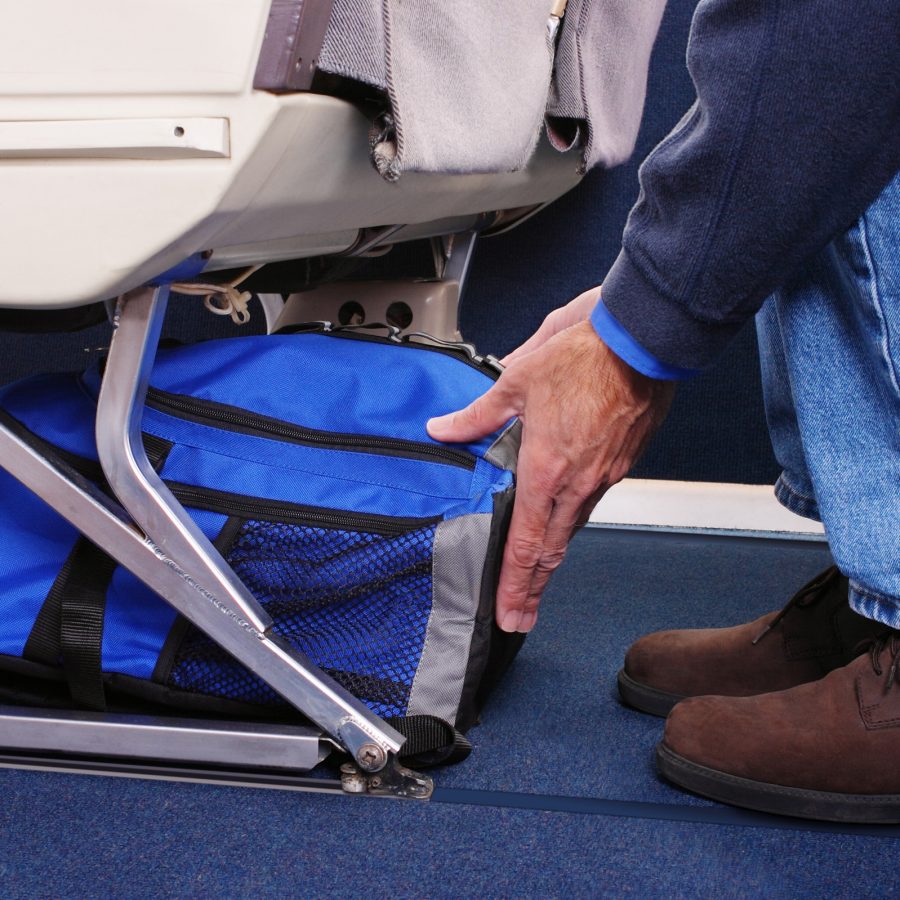
Credit: gchutka/Getty Images
How to travel safely with a power bank
The good news is you can still take your power bank with you on holiday. Just remember to get a high-quality one and adhere to the flight safety regulations. Any spare batteries – including power banks – must have a capacity of under 100Wh and a lithium content of less than two grams.
Pack your power bank safely by keeping it in its original packaging or in a separate protective pouch. You can also protect it from short circuiting by taping over the terminals before your flight. And always remember to keep your power bank in your carry-on baggage under the seat in front of you – not in your checked baggage
All Cathay Pacific aircraft have fire-fighting systems in the cargo holds, but keeping your power bank in the bag in front of you makes it easier for you and our cabin crew to see if smoke is being emitted from it and respond more quickly.
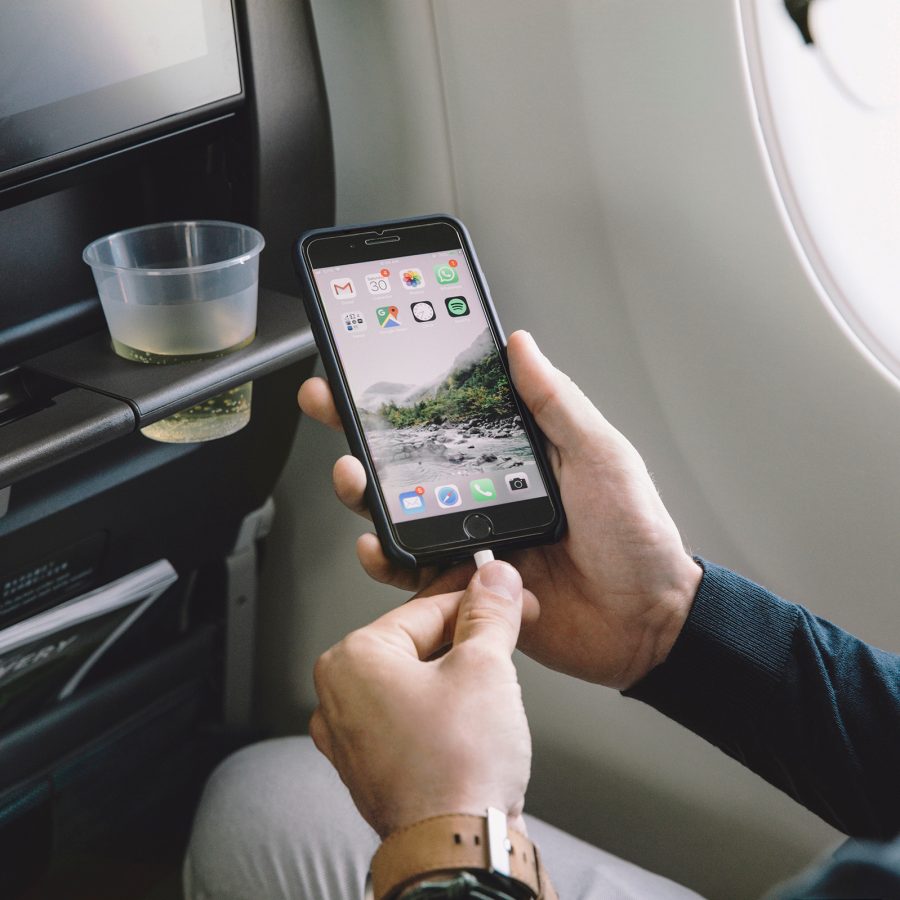
Other useful travel tips from Cathay Pacific
If possible, charge your personal devices before boarding. Once on board, consider switching to “low-power mode” and further extend battery life by turning Wi-Fi off – unless you’re using it inflight.
If your phone runs out of battery, don’t worry – all aircraft across our fleet have in-seat power outlets. Simply connect your personal electronic device to the in-seat power source using a USB cable.
Please note that only one device may be powered per in-seat port; USB multiport extenders and multiport cables are not permitted on flights. Use of in-seat power ports is also not allowed during taxi, take-off, and landing.
Lastly, if you drop your device between your seat or any area around you, do not adjust the seat in any way. Moving the seat may crush or damage your device (which contains its own lithium battery) and cause it to catch fire. Instead, contact cabin crew for assistance – they are highly trained, experienced, and ready to ensure you have a safe and enjoyable flight.
More inspiration
- China – the Chinese Mainland, Hong Kong SAR, Macao SAR and Taiwan Region
- Hong Kong SAR - English
- Chinese Mainland (China) - English
- Taiwan, China - English
- 香港特別行政區 - 繁體中文
- 中国內地 - 简体中文
- 中國台灣 - 繁體中文
- Africa
- South Africa - English
- Asia
- Bangladesh - English
- Korea - English
- Singapore - English
- Cambodia - English
- 한국 - 한국어
- Sri Lanka - English
- India - English
- Malaysia - English
- Thailand - English
- Indonesia - English
- Maldives - English
- ประเทศไทย - ภาษาไทย
- Indonesia - Bahasa Indonesia
- Myanmar - English
- Vietnam - English
- Japan - English
- Nepal - English
- Việt Nam - tiếng Việt
- 日本 - 日本語
- Philippines - English
- Australasia
- Australia - English
- New Zealand - English



